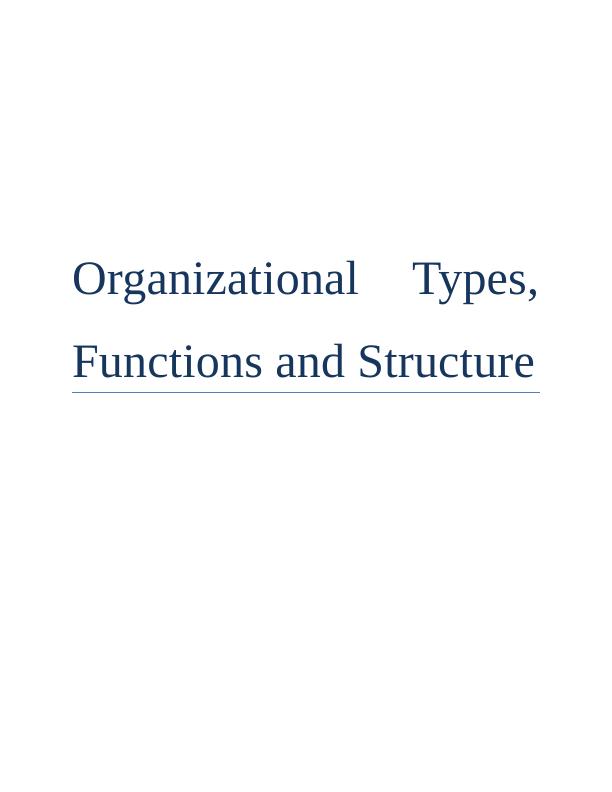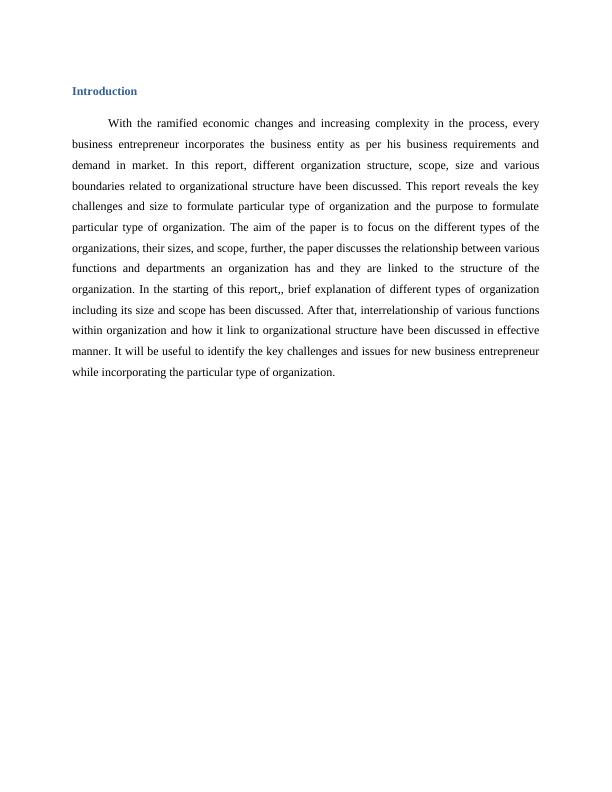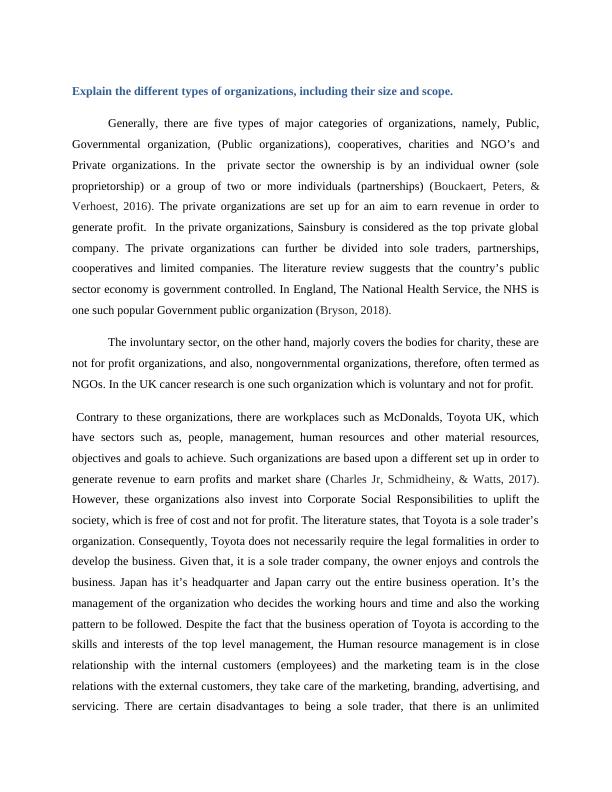Organizational Types, Functions and Structure
Investigate and explain the different types of organisations, their size and scope, and demonstrate the interrelationship of various functions within an organisation and how they link to organisational structure.
13 Pages3832 Words422 Views
Added on 2023-05-31
About This Document
This report discusses different types of organizations, their sizes, and scope, and the interrelationship of various functions within an organization and how they link to organizational structure. It also explains the purposes of public, private and voluntary sectors and legal structures.
Organizational Types, Functions and Structure
Investigate and explain the different types of organisations, their size and scope, and demonstrate the interrelationship of various functions within an organisation and how they link to organisational structure.
Added on 2023-05-31
ShareRelated Documents
End of preview
Want to access all the pages? Upload your documents or become a member.
Business and Business Environment
|13
|4186
|28
Business & the Business Environment of SME'S
|9
|2510
|454
Organization Type and Structure: Analysis of Public, Private, Non-Profit and Sole Proprietorship Organizations
|13
|4078
|237
Types and Purposes of Organizations: Public, Private, and Voluntary Sectors
|14
|4879
|31
Assignment on Business and Business and Environment
|11
|3041
|482
Unit 1: Business and Business Environment (HND)
|12
|3048
|196




